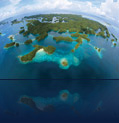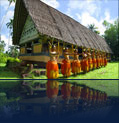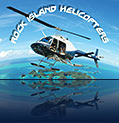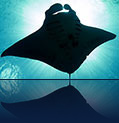Managing Mantas in Palau by Mandy Etpison
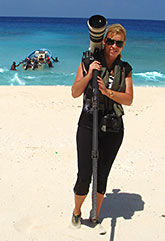 Since I first came to Palau in 1985 to work as a dive instructor, I have been fascinated with exploring the dense forests and waters of this tiny island group. While running a tour/dive operation with my husband, I spent several years studying Palau’s culture and endemic forest birds, resulting in the opening of our small private museum and the publication of my Palau books. But I always return to my first love, the ocean and diving, with sharks and rays being my favorites.
Since I first came to Palau in 1985 to work as a dive instructor, I have been fascinated with exploring the dense forests and waters of this tiny island group. While running a tour/dive operation with my husband, I spent several years studying Palau’s culture and endemic forest birds, resulting in the opening of our small private museum and the publication of my Palau books. But I always return to my first love, the ocean and diving, with sharks and rays being my favorites.
The German Channel and Devilfish City manta cleaning stations have long been known to local dive operators, but seeing a manta ray was always hit and miss because no one really knew exactly when to look for them. Like much marine life in Palau, the manta movements and the plankton they feed upon are tied to the lunar cycles, the wind and tides, and we have now learned to carefully time our manta trips to maximize our chances of a memorable encounter.
After 3-tank dive packages became popular around 2005, German Channel was used as a standard afternoon 3rd dive. Observing the mantas on an almost daily basis, we found out that these rays do not only come in to the cleaning stations at this site, but also feed and mate right outside the mouth of the channel. It also appears that this is an important seasonal birthing site where small juvenile mantas are spotted every year. Today, German Channel is one of the top three dive spots in Palau and unfortunately tourism and boat pressure is starting to affect the resident manta rays here. I have photographed some of the large resident females for over 20 years and I hate seeing scars from fishing hooks, boat strikes, mooring lines and propellers which now increasingly cover their bodies.
I was inspired by the articles about Hanifaru Bay to find out more about our local mantas, and started the Palau manta ray photo ID project (www.mantaIDpalau.org) in 2010. In the two years that followed we were able to identify over 200 mantas, for the first time we saw feeding aggregations of over 70 reef mantas and have come to find that there are many more manta sites around Palau. The number of mantas we have identified amazed even local dive guides, because everyone had always believed our close neighbour Yap had far more mantas than Palau. As well as building up this core baseline data, which is vital to understanding our manta population, this year we also started using time-lapse cameras and helicopter surveys to identify new mantas, find new feeding sites and track their movements around Palau’s reefs.
We will continue to work with local states and stakeholders in the next few years to raise awareness and to explain the tourism potential of manta rays, while making recommendations for site management. I am very excited to team up with the Manta Trust Team, and have their expertise and experience available to assist us with our local efforts.
Return to Topics


